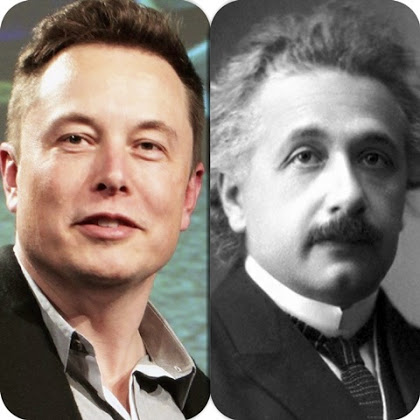Until recently, rocket science was considered the exclusive domain of governments. Only powerful states had the know-how and resources required to launch a rocket into the cosmic ocean.
When Elon Musk began shopping for a rocket that he could launch to Mars, he quickly realized that the price was astronomical–as high as $65 million (and he would have needed at least two, bringing the cost to $130 million). Additionally, this price tag was for the rocket alone. He also would have had to pay for the spacecraft itself, along with its payload.
Just when he was about to give up, he realized that his approach was flawed. In determining the cost to buy a rocket, he was reasoning by analogy. In other words, he was looking at what others had done in the past and adopting their methods with only slight variation.
He decided to abandon this approach and instead use what’s known as first-principles thinking. The credit for the term goes to the ancient Greek philosopher Aristotle, who defined it as “the first basis from which a thing is known.”
This approach requires you to strip everything down to the fundamental truths. Instead of taking the status quo for granted, you take a machete to it. You hack through existing assumptions as if you’re hacking through a jungle, getting rid of the weeds, until you’re left with the fundamental components. Everything else is negotiable.
Using first-principles thinking, the aerospace company Musk founded, SpaceX, managed to launch a rocket into orbit for $7 million. This was the price to SpaceX customers; the actual cost of the rocket was far lower.
How did Musk drastically cut the cost of a rocket? “What is a rocket made of?,” Musk asked himself. “Aerospace-grade aluminum alloys, plus some titanium, copper, and carbon fiber. And then I asked, what is the value of those materials on the commodity market? It turned out that the materials cost of a rocket was around 2 percent of the typical price—which is a crazy ratio for a large mechanical product.” So he decided to build the rocket on his own.
Musk employed the same principle when he upended another assumption built into rocket science: the single-use nature of rockets. For decades, rockets would plunge into the ocean after carrying their cargo to orbit, requiring an entirely new rocket to be built. It was the cosmic equivalent of torching the airplane at the end of each commercial flight. SpaceX made rocket science history by designing a rocket that can safely land back on Earth to be reused after each launch.
Decades before the launch of the world’s first rocket, Albert Einstein transformed physics through first-principles thinking. He dared to question something as basic and intuitive as the fixed, absolute nature of time. Before Einstein came along, scientists assumed that time progressed at the same rate throughout the universe. “Now” had the same meaning to everyone, everywhere.
With his theory of relativity, Einstein obliterated this assumption. For Einstein, the only undeniable truth was the speed of light: According to the laws of physics, it couldn’t be exceeded. Everything else, including time, was negotiable. Through first-principles thinking, he discovered that time itself is relative, not absolute, and moved more slowly closer to a massive object or at high speeds.
Although counter-intuitive, Einstein’s theory of time dilation has been verified in practice. For example, time flows about 40 microseconds faster on GPS satellites than a clock on Earth. This seemingly minor difference can make a huge practical impact. For example, your smartphone calculates where you are based in part on the time it took for a signal to reach the phone from a GPS satellite. As a result, GPS satellites must be programmed to correct for time dilation.
In other words, first-principles thinking ultimately enabled the dream of every man: getting somewhere without asking for directions.
The status quo bias
Using first principles to start from a clean slate is easier said than done. Nothing under the sun is new, which means that we’re never writing on a blank slate. We’re inevitably influenced by what’s been done before and what others around us are doing.
We do things not because they’re superior, but because they happen to be the default. We’re so used to doing things a certain way that we don’t realize the possibility for change. We stick with the status quo even when the benefits of innovation far exceed the costs.
In the face of tension and uncertainty–which are required for intellectual growth–our internal compass wants to retreat to the comforting embrace of the status quo.
What if this doesn’t work? What if others point and laugh? What if I make a fool out of myself?
Better stick with the default. Better look at the rear view mirror. Better copy the “proven” strategies of our competitors.
But the status quo can be a straitjacket. It can hide nuances and obscure possibilities. You can’t get ahead if you’re simply following.
How do you overcome the magnetic pull of the status quo and put first-principles thinking into action? One strategy is to ask what Adam Morgan and Mark Barden call a “propelling question.”
The power of propelling questions
A propelling question is one that combines a bold ambition with a significant constraint. Propelling questions aren’t simply difficult questions (e.g., “How do we double our profit in two years” doesn’t count).
The question must have a constraint that, on the surface, resists the ambition. For example:
How can I create a company that will colonize Mars at a fraction of the ordinary cost?
It’s impossible to answer this question by copying from your competitors or doing what you did yesterday. You can’t solve a propelling question with incremental improvement, or by asking the cliche question, “How do we think outside of the box?”
A propelling question forces a fundamentally different way of thinking that requires your brain to activate new neural pathways, opening up possibilities for innovation.
If SpaceX’s aim were to simply put satellites into Earth orbit, there would have been no reason to do things differently. The company would have relied on the same technology that NASA had been using since the 1960s. But the bold ambition of colonizing Mars–not just landing someone there–coupled with the constraint of unreasonably low cost, forced Musk to employ first-principles thinking and disrupt the status quo.
The rest is rocket science history.
Bold



